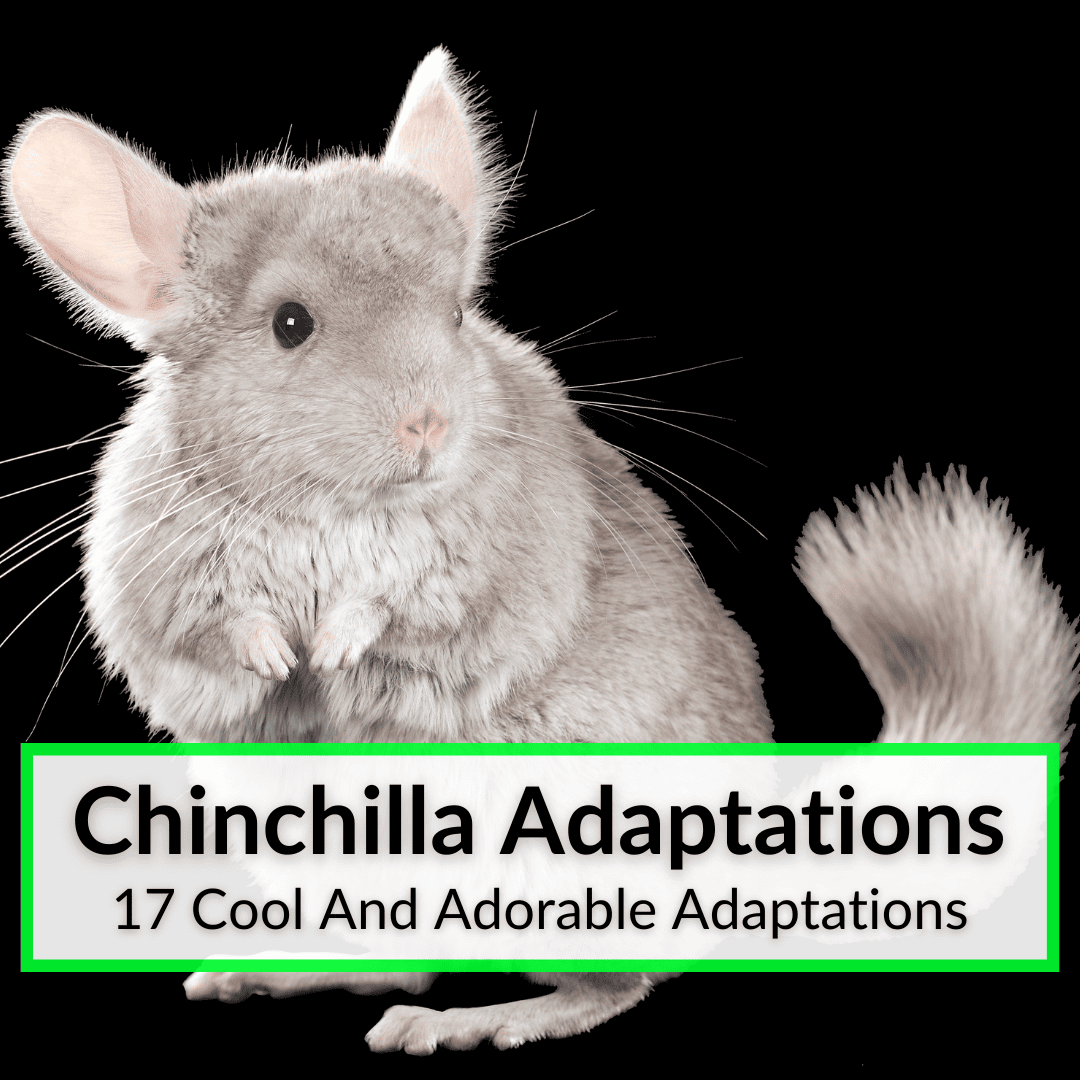
They have a number of unique and fascinating characteristics and behaviors.
That’s because hey come from a harsh environment: the South American Andes.
They had no choice but to develop these incredible chinchilla adaptations.
Their unique behavioral and physical adaptations allow them to survive the inhospitable Andean landscape.
They also make them special, and especially adorable.
Keep reading for a look at some amazing adaptations that are necessary for survival in the wild, but that become cute when chinchillas live as pets in our homes.
Contents
Chinchilla Adaptations
Chinchillas have several behavioral and physical adaptations that help them thrive in the harsh Andean environment. This includes living in groups, building burrows and tunnels to hide from predators, and camouflaging.
We will begin with the physical adaptations, which include strong legs to climb and jump, dense fur, and bushy tails to keep them warm in the cold. We will get into the behavioral adaptations below.
Chinchillas Physical Adaptations
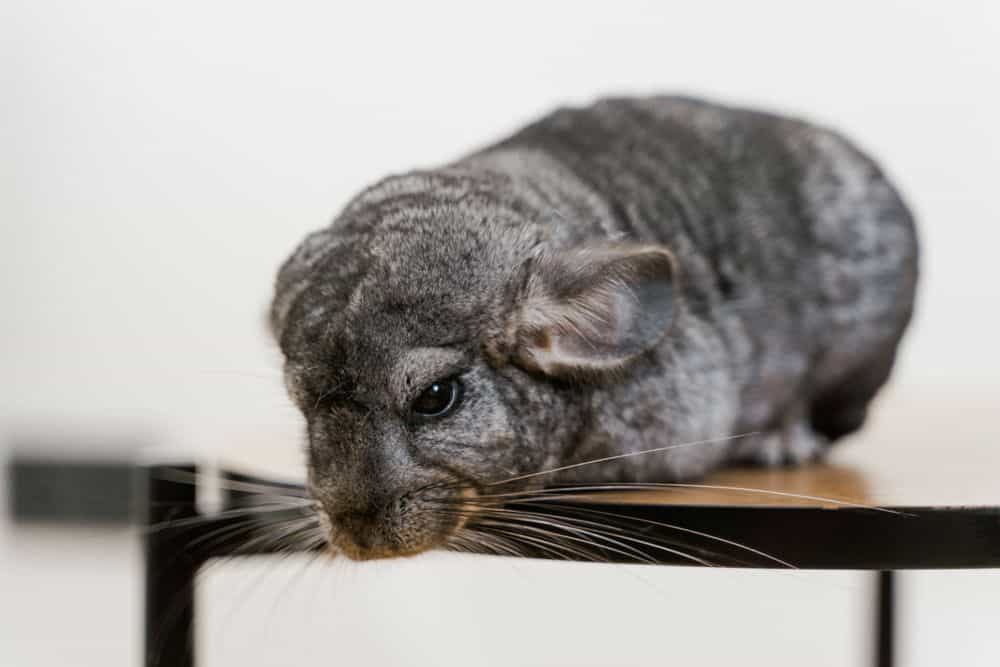
Chinchillas can survive the harsh, dry, climate in the South American Andes thanks to some specific physical adaptations.
Dense Fur
Chinchillas have dense fur that keeps them warm in a cold and harsh environment. While most mammals grow only one hair per follicle, the amazing chinchilla has 50 to 60 hairs in each follicle.
This results in a soft, dense coat that keeps the animal warm and cozy in a cold climate. In fact, chinchillas are one of softest, if not the softest, animals on the planet.
Bushy Tails
Chinchillas have bushy tails for two reasons. First, they can cover themselves with these fluffy tails on cold days, to keep themselves warm while sleeping.
The tail provides them plenty of warmth, just like a blanket! Additionally, when threatened by a predator, they fluff up the tail to appear larger and more intimidating.
Powerful Eyesight
Chinchillas have big eyes and powerful eyesight, especially in the dark. As animals that are active after dark, they are able to see better than humans in low light.
This may be due to the presence of a greater number of rods in their eyes which give them excellent vision under low-light conditions.
Sensitive Hearing

Studies have shown that chinchillas have better hearing than most rodents. In fact, chinchilla hearing overlaps the frequency range of human hearing, and is in the range of 50 Hz to 33 kHz.
This hearing frequency range helps chinchillas stay alert and aware of dangers and helps them detect and escape potential predators.
Strong Hind Legs
Chinchillas have powerful hind legs that enable them to navigate quickly over rocky terrain. They use their strong legs to leap and jump to escape predators and forage for food. Some reports suggest that chins are easily able to jump over 6-foot crevices, despite their small size.
Sharp Nails
Chinchillas have sharp nails that help them forage for food. They use their nails to hold things, dig, climb, self-groom, and even defend themselves from predators.
Sensitive Whiskers
Chinchillas have whiskers that help them ‘sense’ danger when they are not able to see. Whiskers work as sensory tools that aid vision and help the animals get a feel of their environment. This makes them aware of potential dangers, like predators.
Specialized Teeth
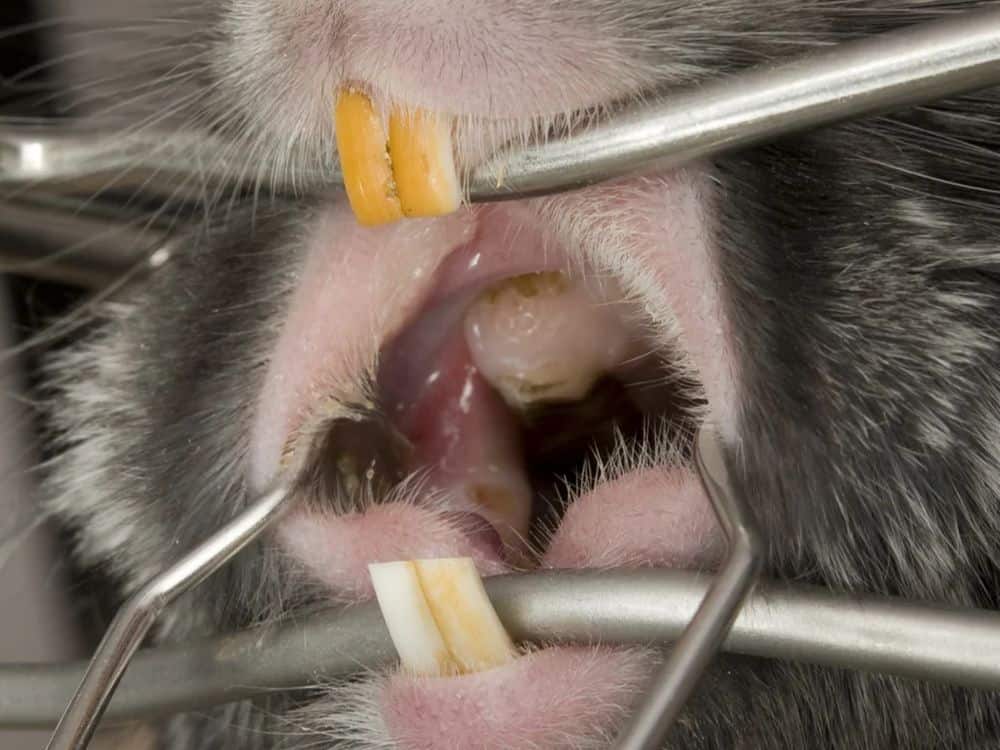
Rodents like chinchillas are gnawing animals. Their incisors are rootless and grow continuously. Their teeth are also chisel-like which helps them easily chew tough or dried grass, cut open seeds and nuts, and eat hard roots, tree bark, etc. This adaptation supports their primarily herbivorous lifestyle.
Specialized Fur Coloring
Chinchilla fur comes in various earthy hues like gray, brown, tan, and blue-black. This coloration provides camouflage to help them blend in with their rocky surroundings.
Chinchilla Behavioral Adaptations
In addition to those physical adaptations, chinchillas also exhibit a number of behavioral adaptations that help them survive the harsh Andean environment.
Group Living
Chinchillas live in herds and are social animals. The herd offers them protection from predators. They also use alert calls and emit special vocalizations to warn each other about potential threats.
Living in social groups also allows them to groom each other to keep their fur clean and free from parasites.
Burrowing And Tunneling
Chinchillas are capable of building an intricate network of burrows and tunnels to keep them safe from predators and harsh climatic conditions. Burrows and tunnels help provide them with shelter and protection.
Furthermore, tunnels and burrows are also necessary for food storage in the cold winter months when food is scarce. Chinchillas do not hibernate, so they need to have plenty of food throughout the winter.
Crepuscular Activity

Chinchillas are mainly active from dusk until dawn, especially the twilight hours (which is what makes them crepuscular). Being prey animals, they use the cover of darkness to forage for food and stay safe from predators.
Scent And Territory Marking Behavior
Chinchillas use their scent glands, urine, and saliva to mark their territory. This helps them keep other animals away from their territories while also helping them communicate with their family members.
This behavioral adaptation is important for communicating with each other about their reproductive status, which, in turn, is necessary for the continuity of their species.
Coprophagy
Coprophagy is the act of eating one’s own feces. This is normal behavior in many rodent species, including chinchillas.
Coprophagy may seem disgusting to humans, but it helps chinchillas extract vital nutrients lost through excretion. This is important for chinchillas’ health, especially when food is scarce.
Volcanic Dust Baths
Chinchillas roll around in the volcanic ash found in their natural environment. The ash helps keep their fur clean by absorbing excess moisture and oils and removing parasites like mites and ticks.
Regular dust baths are important for a chinchilla’s mental and physical well-being. Their dense fur does not dry well, so water baths are out of the question. Not that there is much water in their natural environment anyway.
Conserving Water
The chinchilla’s natural habitat has severe water scarcity. They usually acquire drinking water from dew drops, tree sap, moist tree bark, and water accumulated on rocky surfaces after rain. Their bodies also store water. Their metabolism has adapted to conserve water in the arid climate.
Agile Climbing And Jumping
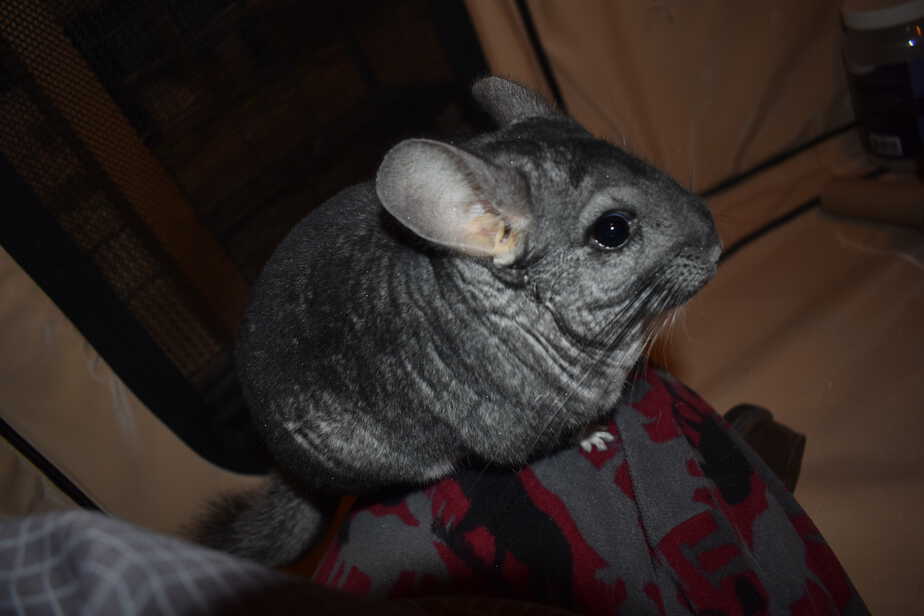
Agility and speed are important for these small prey animals. Their powerful legs easily help them jump over rocks and navigate between crevices. This agility and speed helps chinchillas escape predators.
What Abilities Do Chinchillas Have?
Chinchillas possess several abilities that can aid their survival.
- Jumping and climbing: Chins can easily jump and climb over rocky formations. They can also leap over crevices and rocks to escape predators.
- Vocalizing: Their ability to vocalize helps keep their group members safe. They use specific alarm calls to warn others about potential dangers.
- Digging and burrowing: This ability helps provide them with shelter and protection.
- Scent marking: This ability helps them communicate with other chinchillas.
- Camouflaging: This chinchilla ability helps them blend into their surroundings and stay safe.
- Grooming: The ability to groom keeps their fur clean and healthy. They also groom each other, which encourages bonding between their group members.
What makes The Chinchilla Unique?
Chinchillas possess various characteristics that make them unique. First, they are only found in the South American Andes, where vegetation and water are scarce.
Despite their rugged and barren habitat, chinchillas have many adaptations that help them thrive in these environments.
They grow thick and dense fur. Their hair follicles contain 50 to 60 hairs, a feature that is not seen in other furry mammals.
Chinchillas are also unique in their looks. They are cute, and their soft fur and bushy tails enhance their cuteness.
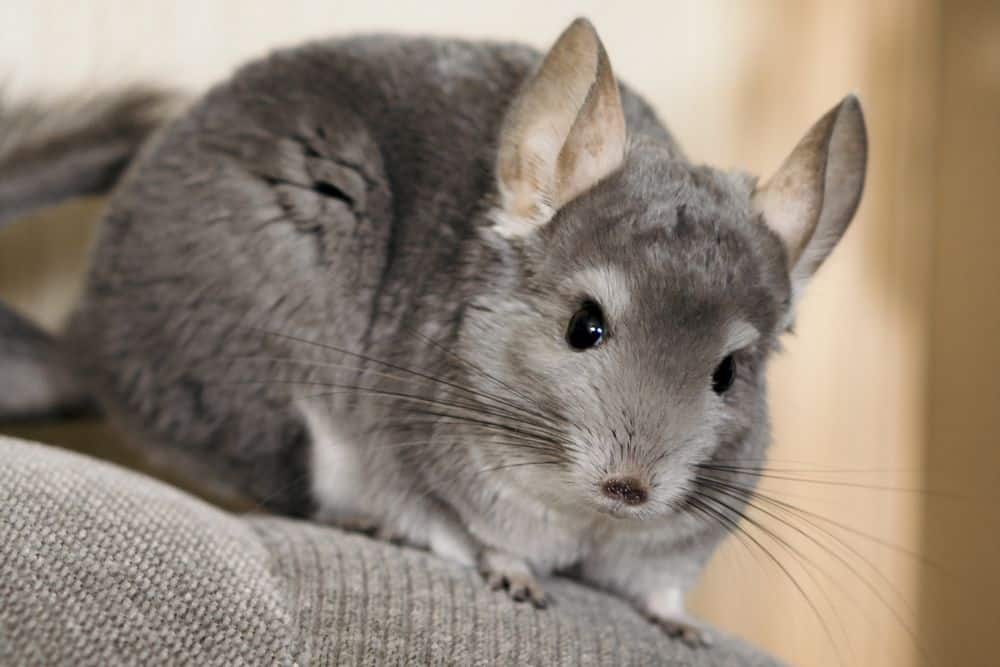
Unlike other rodents, chinchillas are social animals. They form complex social hierarchies that help them survive.
These unique animals also have various physical adaptations like strong legs, long ears, and large, round eyes. These unique chinchilla characteristics help them stay safe from predators.
Chinchilla Behavioral And Physical Adaptations: Final Thoughts
Did you find these chinchilla adaptations as fascinating and cool as I do? Obviously, some of the chinchilla behavioral adaptations are a direct result of corresponding chinchilla physical adaptations, but I thought it still made sense to separate them.
As mentioned briefly in the intro, many of these adaptations result in some of the cutest chinchilla behaviors when we keep them as pets. Popcorning and dust baths are two of my favorites. They are my chin’s favorites too!
Leave a Reply